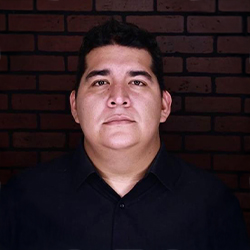Math and Physics for NDT: Visual Testing 3 December 2025
Gain practical math and physics knowledge for visual testing. This course covers light behavior, optical measurement, lens principles, and calculations used in imaging, inspection, and direct visual testing.
Member: $300
Credit Info
- Contact Hours: 5
- IACET CEUs: N/A
- Valid for ASNT Level III recertification: Yes
Course Overview
This course provides a comprehensive foundation in mathematical principles essential for VT applications.
It is split into two sections, the first is a pre-requisite section where learners will strengthen essential mathematical skills by mastering numerical formatting, unit conversions, exponents, and logarithms while applying the order of operations to solve equations. You will also explore trigonometric principles, including right triangle properties, Pythagorean theorem, and sine functions, to build a strong foundation for technical and engineering applications.
The second part of the course relates to math and physics concepts that VT technicians may encounter. This course provides a comprehensive understanding of light, optics, and visual perception principles essential for nondestructive testing (NDT) and optical inspection. Learners will explore the relationship between wavelength and frequency of visible light, illumination measurement conversions, and distinctions between photometric and radiometric quantities. The course covers light intensity behavior using the inverse square and Lambert cosine laws, as well as contrast ratio calculations for detecting visual details. Participants will apply Snell’s law to analyze light refraction through different media and predict directional changes through prisms and lenses. Key optical principles, such as focal length, magnification, depth of field, and field of view, will be examined in relation to imaging and inspection applications. By the end of the course, learners will be equipped with enhanced mathematical skills to perform visual testing procedures.
*Students will need access to a Casio FX-260 Solar or other non-programmable scientific calculator for use during the course*
Upon Completion, Learners Will Be Able To:
- Explain the relationship between the wavelength and frequency of visible light
- Convert measurements of illumination between traditional and SI units
- Differentiate between photometric and radiometric quantities and convert between them
- Describe how light intensity decreases according to the inverse square law
- Calculate illumination levels on a surface based on the distance and intensity of a light source
- Determine the effect of incident angles on surface illuminance
- Integrate the inverse square law with the Lambert cosine law for illumination calculations
- Compute contrast ratios given luminance values of observed details and backgrounds
- Explain the relationship between contrast ratio and the probability of detecting visual details Use Snell’s law to calculate changes in the angle of light as it moves through different media
- Determine the refractive index of a medium using Snell’s law
- Predict the directional change of light as it passes through a prism
- Define focal length in terms of the working distance between a lens and an object
- Calculate the magnification of simple and diverging lenses using focal length measurements
- Derive the f-number of an optical system based on focal length, aperture, and refractive index
- Relate focal length to image and object distances
- Explain the concepts of depth of field and field of view and how they are interrelated
- Define direct visual testing (DVT) and its applications
- Identify standard viewing distances and angles for DVT
Meet the Instructor

Jorge Reyna
Jorge is a seasoned NDT, welding, and coatings inspection professional with extensive field experience across Mexico, Panama, Ecuador, and China. He holds ASNT Level III certifications in multiple methods, is an AMPP Master Coatings Inspector, AWS SCWI, and ACI Certified Concrete Field Testing Inspector. Fluent in Norwegian and Italian, Jorge brings global expertise to every project. Since 2013, he has managed his own inspection firm, JRSA Inspections, based in Monterrey, Mexico.
Questions? Contact us at education@asnt.org